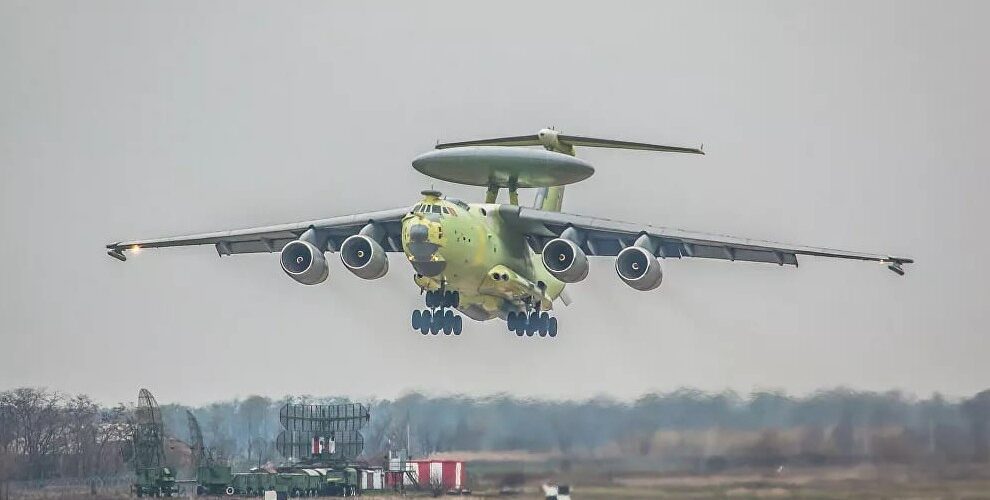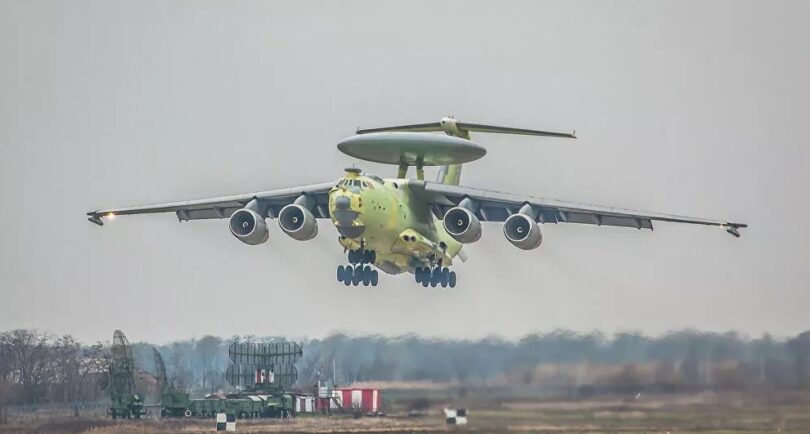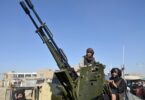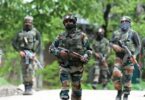Pakistan’s former Air Marshal Masood Akhtar has admitted in an interview that the Pakistan Air Force (PAF) lost an Airborne Warning and Control System (AWACS) aircraft during India’s ‘Operation Sindoor’ on the night of May 9/10 to a BrahMos missile strike at PAFs base in Bholari. Akhtar posted on X: “They (Indian forces) fired four back-to-back BrahMos surface-to-surface missiles or air-to-surface, I am not sure. The (Pakistani) pilots rushed to secure their aircraft, but the missiles kept on coming, and unfortunately, the fourth one hit the hangar at Bholari (airbase), where one of our AWACS was standing. It was damaged and casualties were also reported”. Before Operation ‘Sindoor’, Pakistan had 15 early warning aircraft compared to six AWACS the Indian Air Force (IAF) is presently operating: 3 x Beriev A-50 - IL-76 aircraft fitted with Israeli EL/W-2090 Phalcon radars; 3 x Embraer EMB-145 - converted into AWACS by DRDO and fitted with indigenous NETRA system.
Interestingly, India downing Pakistan’s US-supplied F-16s and China-supplied J-10C in Op ‘Sindoor’ have hit the sales of these aircraft. India has refused to acknowledge the type of fighter jets it lost, leaving aside the numbers. But Indonesia has scrapped its USD 8.1 billion deal with Dassault (France) for 42 Rafale fighter jets and instead has signed a USD 10 billion deal with Turkey for 48 x KAAN fifth-generation fighter jets for delivery over a 10-year period. The deal reportedly includes production of these 48 x KAAN jets in Turkey, utilizing Indonesia’s capabilities, and also transfer of technology (ToT) to Indonesia (https://www.eurasiantimes.com/amid-rafale-j-10c-dogfight-turkish-kaan-emerges-winner-erdogan-says-will-export-48-jets-to-indonesia/?amp).
On the Ukraine front, Volodymyr Zelensky, who can call a potato a tactical nuke, claimed 34% of Russia’s strategic bomber fleet was impacted (over 40 strategic bombers, including Tu-95s, Tu-22s, and A-50 early-warning aircraft destroyed/damaged) in Operation ‘Spider’s Web’. But the actual damage was much less (https://www.thestrategicperspective.org/op-eds/behind-the-spider-web/) and no Russian A-50 early warning aircraft was hit.

Now news reports of May 21, 2025, indicate that Russia has cancelled its A-100 AEW&CS development project. In December 2023, Rostec had issued its last official statement, in which it stated that its subsidiary, Vega Concern, was delivering modernized A-50 AEW&CS aircraft to the Russian armed forces while concurrently developing the more advanced A-100 AEW&CS. The report said that the A-100 is intended to replace the A-50 system and will significantly surpass it in capability. The A-100 features a fully digital navigation system, a digital flight control system with a “glass” cockpit, and an active electronically scanned array (AESA) radar. This “flying radar” system is mounted on an Il-76MD-90A airframe, which is powered by new, low-noise, high-thrust PS-90A-76 engines.
There is speculation that Russia has cancelled the A-100 AEW&CS project because of Western sanctions. But the first flight of the A-100 took place in 2017, its flight testing began in 2019, and first flight with an operational radar in February 2022. But this reasoning doesn’t gel because Russia has been under western sanctions since 2014. The reasons for the cancellation of the project are being perceived as follows: combat losses highlighting the vulnerability of airborne radar systems to long-range missiles; operational experience and the evolving dynamics of drone warfare warranting review of the systems required; feasibility of cheaper, more flexible alternatives to traditional AEW&CS platforms.
The war in Ukraine has shown that the paradigm when AEW&CS platforms could operate with immunity without fear of air-launched or ground-launched missiles capable of seriously threatening them at their typical standoff distances. Present era long-range missiles, with ranges exceeding 300 km, pose a credible threat to AEW&CS aircraft, even when they operate at maximum standoff range. Russia is believed to have lost two A-50 AEW&CS platforms; one over the Sea of Azov on January 14, 2024 and another over Krasnodar Kraib on February 23, 2024; with aircraft straying into lethal envelope of AD systems due to inadequate situational awareness. Compounding the threat, many modern AD systems are highly mobile, making them difficult to track and predict.
AEW&CS platforms are equipped with defensive countermeasures but the losses in Ukraine indicate that these systems do not guarantee survivability. The threat will only grow as AD missile ranges continue to increase. Moreover, drone warfare is evolving at rapid pace and since drone capabilities are increasingly defined by onboard data, this may have required change in qualitative requirements in the A-100; making its role as a drone control hub obsolete or impractical. Ukraine has demonstrated effective use of low-latency satellite communication constellations like Starlink for operating drones deep inside Russian territory.
Another reason for Russia abandoning the A-100 is viewed as the possible shift towards an alternative aerial warning and control architecture; high-endurance fighter aircraft equipped with long-range radars and missiles functioning as distributed nodes of an AEW&CS network. Russia reportedly possesses the necessary hardware, software, and tactical experience to implement this new concept. The MiG-31BM, Su-35S and Su-57 are already equipped with long-range radar systems and networking capabilities that allow them to act as airborne surveillance and control platforms, plus all these fighter jets can carry long-range air-to-air missiles like the RVV-BD (R-37). The Su-57 can operate in a networked environment with each other, as well as integrate with Su-35S fighters and S-400 AD systems. Additionally, the Su-34 fighter-bomber can carry specialized reconnaissance pods on external pylons, expanding its role beyond strike missions.
The operational costs of maintaining a network of fighters would likely be no higher than operating a traditional AEW&CS platform, which typically requires its own escort fighters for protection. The increasing cost, complexity, and vulnerability of traditional AEW&CS systems raise serious questions about their long-term viability. Interestingly, the twin-seat variant of the Su-57 is designed to detect and engage air, ground, and surface targets, plus it also serves as an airborne command post for network-centric operations involving mixed aircraft groups. The report says that Russia may be the first nation to recognize and act upon the writing on the wall.
However, the above Russian template cannot be strictly applied to India because India needs both the systems: fighter jets with long-range radar systems and networking capabilities that allow them to act as airborne surveillance and control platforms in combat/war situations, and; traditional AWACS/ AEW&CS systems in no-war no-peace situations, given our vast borders over difficult terrains and the 52 satellites providing 24x7 cover is likely to take another 8-10 years. An INR 10,000 crore DRDO project to provide three I-STAR aircraft to the IAF through an open tender from foreign manufacturers, including Boeing and Bombardier is likely to be approved in the near future. Additionally, the DRDO is developing 12 more NETRA systems based on two different platforms.
Finally, amid all the hoorays about Op ‘Sindoor’, India needs to seriously gear up for defence against hypersonic missiles. According to former ISRO chief S. Somnath, India requires hundreds of satellites; without a massive satellite boost, Indian Armed Forces risk blind spots in crisis, an unacceptable vulnerability in an era where wars play out above the clouds (https://www.businesstoday.in/india/story/ex-isro-chief-warns-hypersonic-missiles-extremely-difficult-to-intercept-india-needs-hundreds-of-satellites-479805-2025-06-10). This is all the more relevant when the adversary employs missiles in ‘swarms’ – as being witnessed in the ongoing Israel-Iran War; where Iranian missiles are breaching well-coordinated air defences of Israel. China also follows the policy of swarms.
The author is an Indian Army veteran. Views expressed are personal.










